LGD dogs are used by farmers and ranchers to to protect their goats, sheep and even chickens from predators.
Table of contents
What is an LGD dog?
LGD stands for Livestock Guardian Dog, which are category of working dogs.
These LGD dogs have been employed by farmers and ranchers for centuries as a means to effectively protect livestock from predators. Gaining popularity first in Europe and Asia, they were introduced to the United States in the late 1970s following government bans on using poison as a means of predator control for farmers and ranchers (Bommel).
Though livestock guardians are typically large dogs, their primary means of livestock protection is through deterrence in three ways: territorial exclusion, disruption, and confrontation of potential predators (Texas A&M Agrilife Extension).
Disruption refers to barking or other types of aggressive behavior to encourage potential threats to stay away. When all else fails the LGD uses direct confrontation to attack the predator to keep the livestock safe.
Often the biggest threat to goats, sheep, or even chickens, is other dogs that may be roaming the area so the livestock guardian dog being there and marking a scent establishes territorial boundaries and keeps other dogs away.
Other common predators include birds of prey (eagles, hawks, etc.) bears, coyotes, wolves, stray dogs, mountain lions and other large predators
Livestock guardian dog vs. family farm dog
People often wonder what makes livestock guardian dogs so unique compared to other “farm dogs,” or even herding dogs, such as the border collie.
They differ from herding dogs in that they are not trained to move or gather livestock and have a less threatening appearance in comparison to livestock guardian dogs, who have been bred to stay calm around livestock.
Above all though, perhaps one of the most important characteristics of livestock guardian dogs is that they are not pets. They are bred to work, roam, and yes, bark loudly, as needed to guard livestock which makes them not well suited to being kept as companion dogs and in areas where you have close-by neighbors.
Common Livestock Guardian Dog Breeds
This article covers the most popular Livestock Guardian Dog breeds in North America. The breeds fall into what’s called a “working group” of breeds.
Historically working LGD have ancient breed origins as they’ve been bred specifically to have innate protective instincts for their livestock with any perceived threat. This type of dog tends to work on its natural, strong instincts with very little to basic training needed as compared to a typical pet dog or even herding dog.
The different breeds of livestock guardian dogs covered include:
- Great Pyrenees
- Maremma Sheepdog
- Anatolian Shepherd
- Turkish Kangal
- Tibetan Mastiff
- Akbash
Great Pyrenees
Originating from the Pyrenees Mountains between France and Spain, the Great Pyrenees is one of the most popular and recognizable breeds of livestock guardian dogs. Great Pyrs are also considered to be quite gentle, with people and goats and sheep alike.
Great Pyreneese coloring and double coat
They typically sport a solid white coat that can also have patches of gray or tan, making the most recognizable as the “big white dog” LGD breed.
Their thick, double coats make them great dogs for regions with cold winters. In the spring its common to see Great Pyrenees shedding their coat. A quick brush is all they need and possibly clipping any mats or debris in their coat.
It’s not recommended to shave or trim Great Pyrenees fur since it’s a double coat. The double coat not only provides warmth in the winter, but keeps the LGD dog cool in the summer.
Great Pyrenees behavior problems
Great Pyrenees tend to be independent dogs and even when bonded with their goats or sheep can often be found at a distance from them to keep watch. This behavior problem is often the biggest complaint of Great Pyrneese owners. Adequate fencing can help, along with potentially using GPS collars.
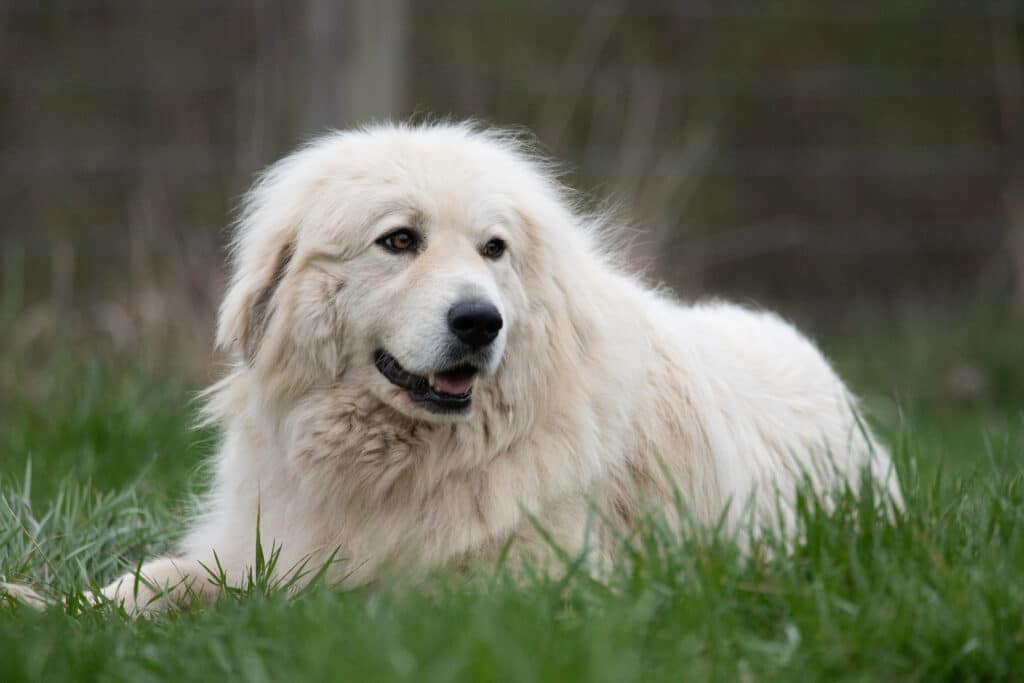
Maremma livestock guardian dog
The Maremma livestock guardian dog comes from Central Italy and looks similar to the Great Pyrenees with longer and thicker coats that are usually solid white with occasional spots of pale orange or yellow.
Though sheepdog is in the name – Maremma sheep dog – they are also used to guard goats and cattle and generally stick close to their livestock at all times, rather than wander.
Maremma dogs are known for being calm and content while on the job as a livestock guardian and are most active at night. They aren’t always the friendliest toward human contact, especially strangers who try to approach them, though they’re not known for being overly aggressive.
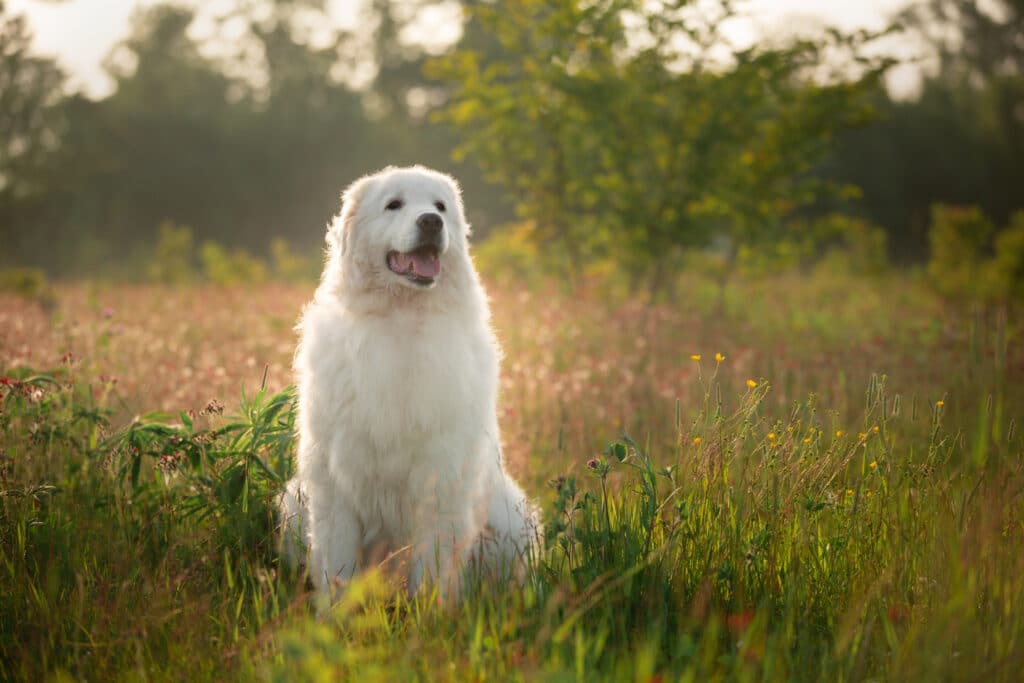
Anatolian Shepherd
Originating from Turkey, the Anatolian Shepherd dog is recognizable by its curly tail, short-haired yellowish-brown coat, and black face “mask.” Here in the U.S. they’re often used to guard cattle on large swaths of pasture or open ranges without a lot of supervision and are calm and observant over their livestock and surroundings.
Anatolians can have a strong prey drive making them incredibly territorial, aggressive towards intruders (human or predator), and tend to be overly playful with livestock as young dogs, due to their tendency to mature slower than other LGD breeds.

Turkish Kangal
Also originating from Turkey, the Turkish Kangal dog is technically a type of Anatolian Shepherd with a similar temperament though larger and perhaps a bit faster with more color variants.
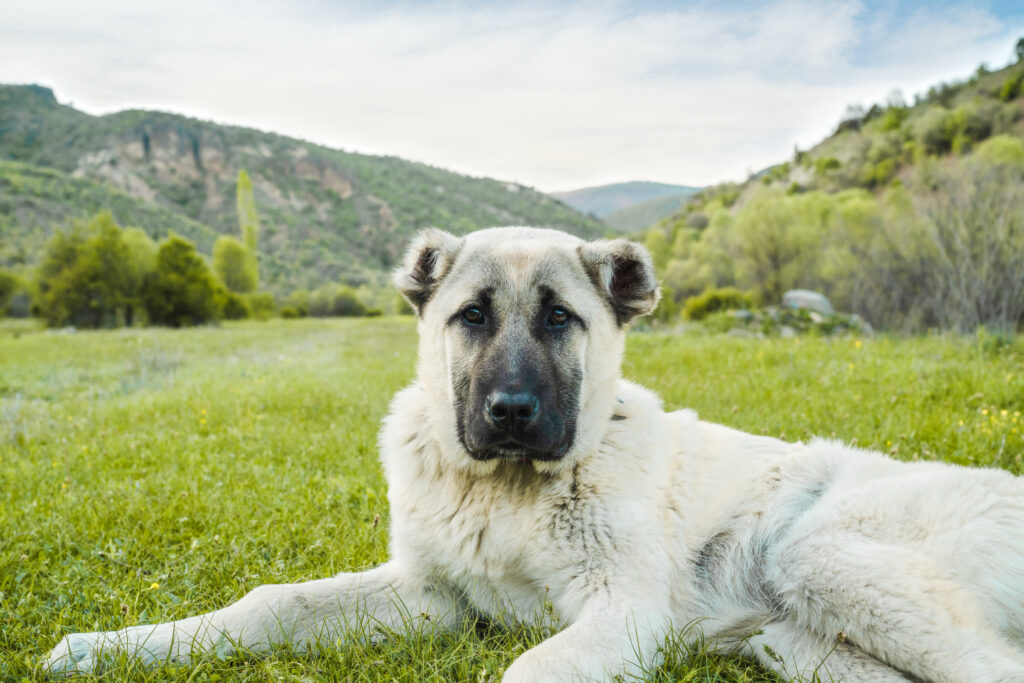
Tibetan Mastiff
Hailing from Tibet, the Tibetan Mastiff historically was bred to not only guard livestock but also caravans, properties, villages, monasteries, and monks.
The Tibetan Mastiff LGD dog has a long coat that are usually black, brown, or even blue/grey.
Over the years these dogs have been bred to have a softer and calmer demeanor with a tendency to gravitate strongly towards people, therefore not always making them the best guards of livestock here in the U.S.
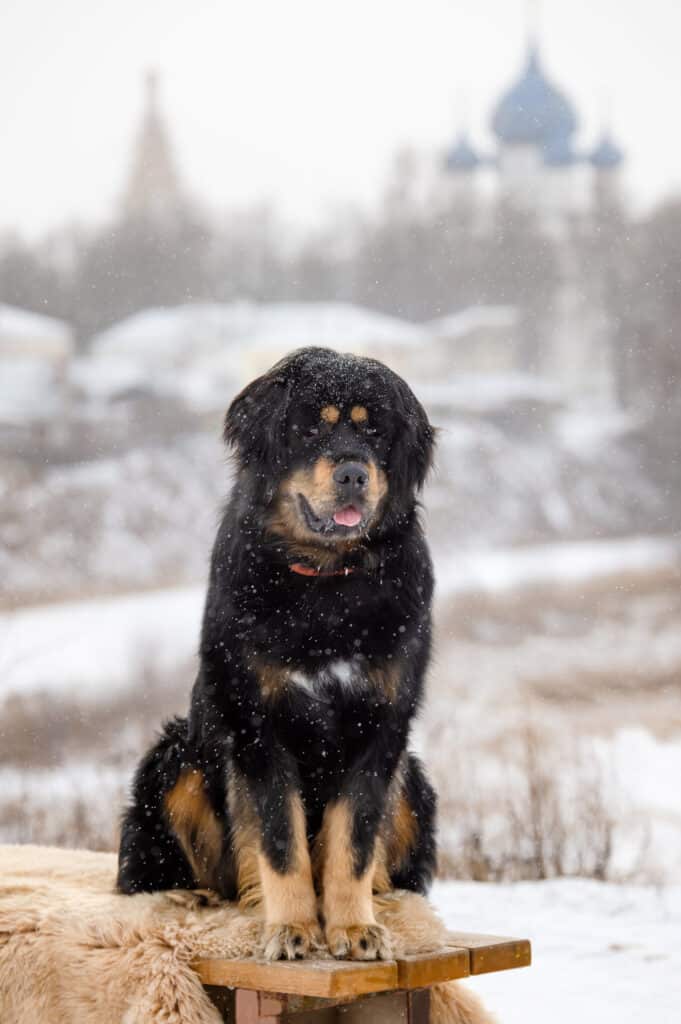
Akbash
Another LGD dog originating from Turkey, Akbash means “white head” in Turkish which is exactly what this LGD breed is known for, along with an all-white, sleek coat. They’re also known for their speed, agility, and stamina when guarding their livestock and keeping an eye on their territory.
Akbash dogs tend to have strong bonds with their livestock and also have a tendency to be quite aggressive in their guarding, especially against other dogs.
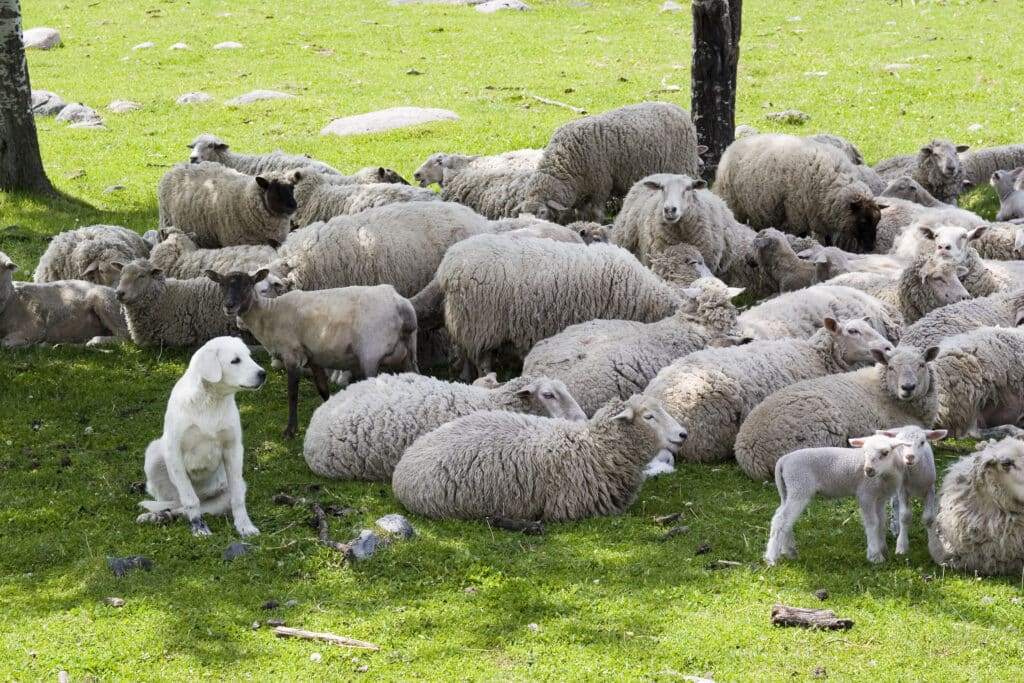
Common livestock guardian dog breed mixes
It’s not uncommon for farmers and ranchers to own livestock guardian dogs who are breed mixes. Some of the benefits include longer life expectancy along with maximizing the strengths and minimizing the weaknesses of the breeds.
It’s important to note that these guardian mixes should only be a combination of true guardian dog breeds and not include other working dog breeds, such as herding dogs, or even other breeds in general.
Common mixes include:
- Great Pyrenees Akbash
- Great Pyrenees Maremma Sheepdog
- Anatolian Shepherd Great Pyrenees mix
- Akbash Anatolian mix
Livestock guardian dogs on our goat and sheep farm
We currently have three livestock guardian dogs who live full time with our flock of Texel sheep and herd of Boer-Kiko cross goats on our farm Cylon Rolling Acres. Our LGDs are Great Pyrenees and Maremma-Akbash-Anatolian mix.
We’ve found the LGDs to be very helpful in managing the predators that we have in Northern Wisconsin, which include coyotes, wolves, bear, eagles and hawks. I know we wouldn’t be able to raise our sheep and goats on pasture with rotational grazing 24/7 in the summer without our dogs.
You can learn more about how we train our livestock guardian dogs and introduce new puppies to the farm in this article here.
References
- Dawydiak, O. and Sims, D. “Livestock Protection Dogs: Selection, Care and Training”
- Texas A&M Agrilife Extension. “Livestock Guardian Dogs”
- Van Bommel, L. “Guardian Dogs: Best Practice Manual for the use of Livestock Guardian Dogs”
Photo credit: iStock photos
Related blog posts
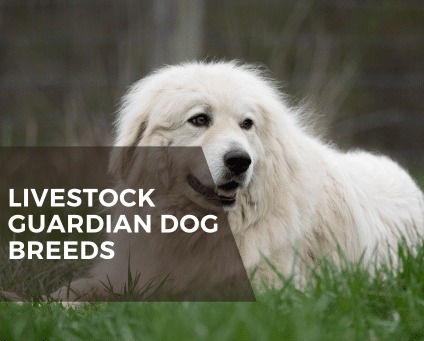
LEAVE A COMMENT
Comments